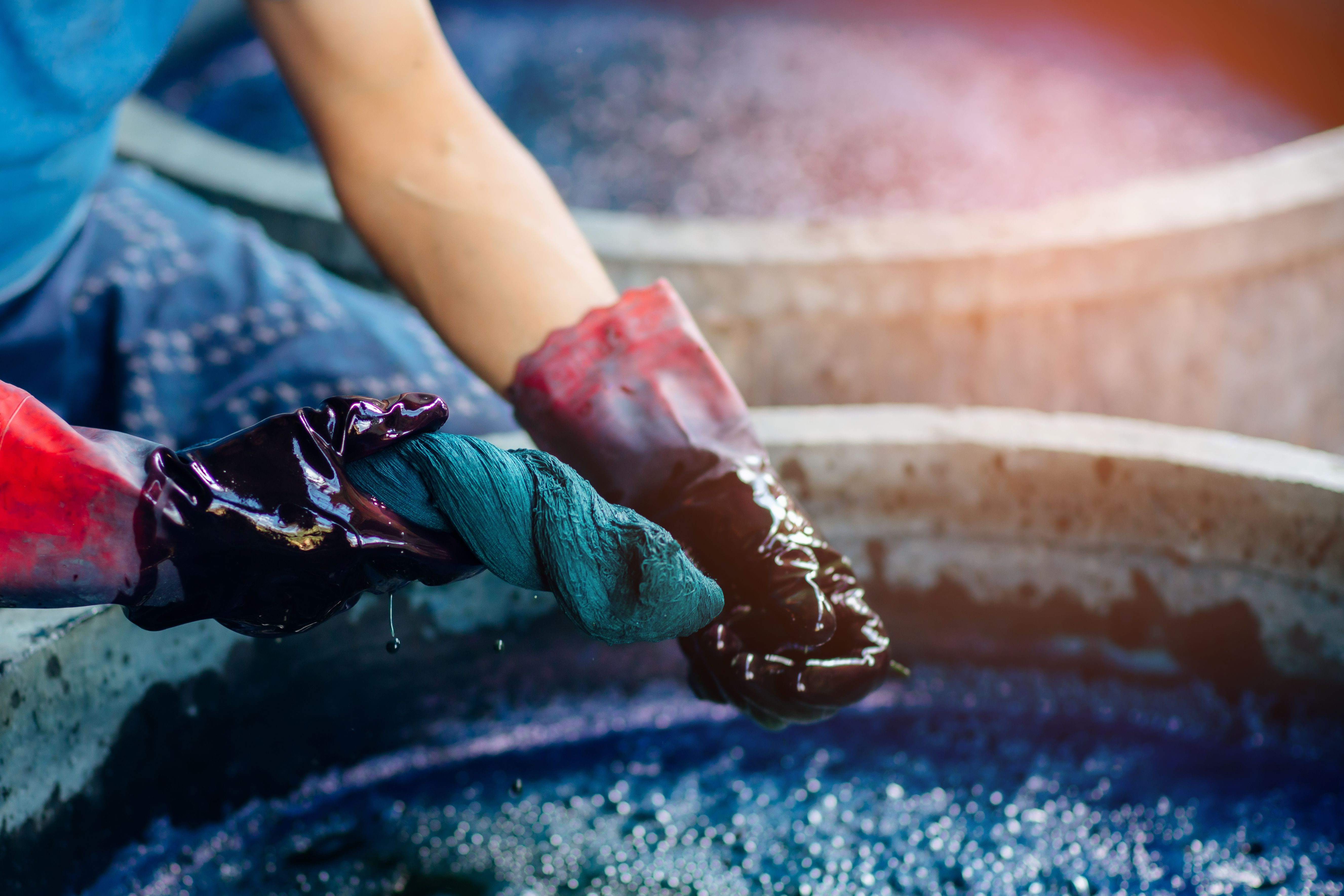DESI-MS Helps Analyze Historical Dyes
A desorption electrospray ionization mass spectrometry (DESI-MS) method has been developed to effectively analyze historical synthetic dye samples.
Researchers at the University of Edinburgh have developed a method using desorption electrospray ionization mass spectrometry (DESI-MS) to analyze historical synthetic dyes. The study, published in Analytical Chemistry, describes the development of a DESI-MS source that was used to analyze 14 early synthetic dyestuffs, including six chemically different dye families, in both negative and positive modes (1). The method was applied to modern early synthetic dye references on silk and wool as well as historical samples from the 1893 edition of Adolf Lehne’s Tabellarische Übersicht über die künstliche organischen Farbstoffe und ihre Anwendung in Färberei und Zeugdruck, providing naturally degraded reference samples of early synthetic dyes.
Process of dye fabrics indigo in Thailand | Image Credit: © Pornthiwa - stock.adobe.com

DESI-MS is a rapid, noninvasive, and minimally destructive technique that does not require sample preparation, making it advantageous for applications in dye analysis. However, since it is an ambient technique, it results in more background peaks than non-ambient techniques, which may be a disadvantage if the concentration of the analyte is low. It is also highly dependent on geometrical parameters and is a surface technique, which might be a disadvantage when studying historical objects if much surface contamination is present on the object.
The successful analysis of the chemically different dye families showed the presence of known degradation products and byproducts arising from the original synthetic processes in the historical samples. This study demonstrates the applicability and potential of DESI-MS to the field of historical dye analysis.
Adolf Lehne was one of the most influential German dye chemists of his time, and much of his work was focused on the standardization of the emerging and rapidly expanding dyeing industry. Included in his many important works was his handbook, which he printed several editions of and in which he attempted to summarize the most important dyestuffs on the market. The book provides naturally degraded reference samples of early synthetic dyes, making it an important source for understanding original dye recipes and degradation pathways.
The use of DESI-MS in historical dye analysis could have significant implications for the preservation of cultural heritage. By understanding the chemical makeup and degradation pathways of historical dyes, researchers can better understand the processes that contribute to their deterioration and develop preservation strategies to extend their lifespan.
Reference
Sandström, E.; Vettorazzo, C.; Macakay, L.; Troalen, L. G.; Hulme, A. N. Development and Application of Desorption Electrospray Ionization Mass Spectrometry for Historical Dye Analysis. Anal. Chem. 2023, 95, 11, 4846–4854. DOI: https://doi.org/10.1021/acs.analchem.2c03281
How Many Repetitions Do I Need? Caught Between Sound Statistics and Chromatographic Practice
April 7th 2025In chromatographic analysis, the number of repeated measurements is often limited due to time, cost, and sample availability constraints. It is therefore not uncommon for chromatographers to do a single measurement.
Fundamentals of Benchtop GC–MS Data Analysis and Terminology
April 5th 2025In this installment, we will review the fundamental terminology and data analysis principles in benchtop GC–MS. We will compare the three modes of analysis—full scan, extracted ion chromatograms, and selected ion monitoring—and see how each is used for quantitative and quantitative analysis.






